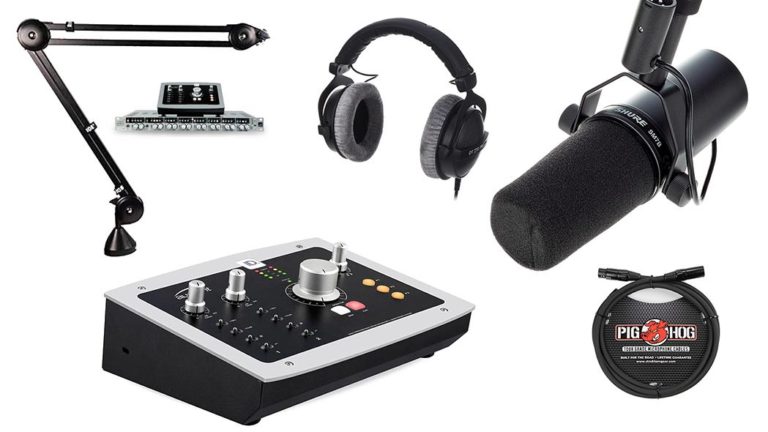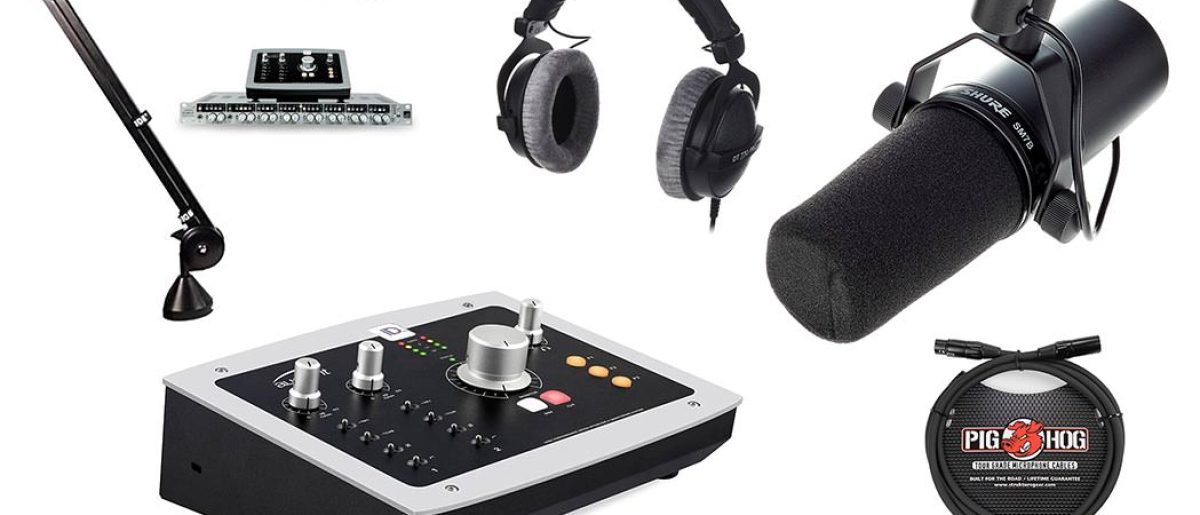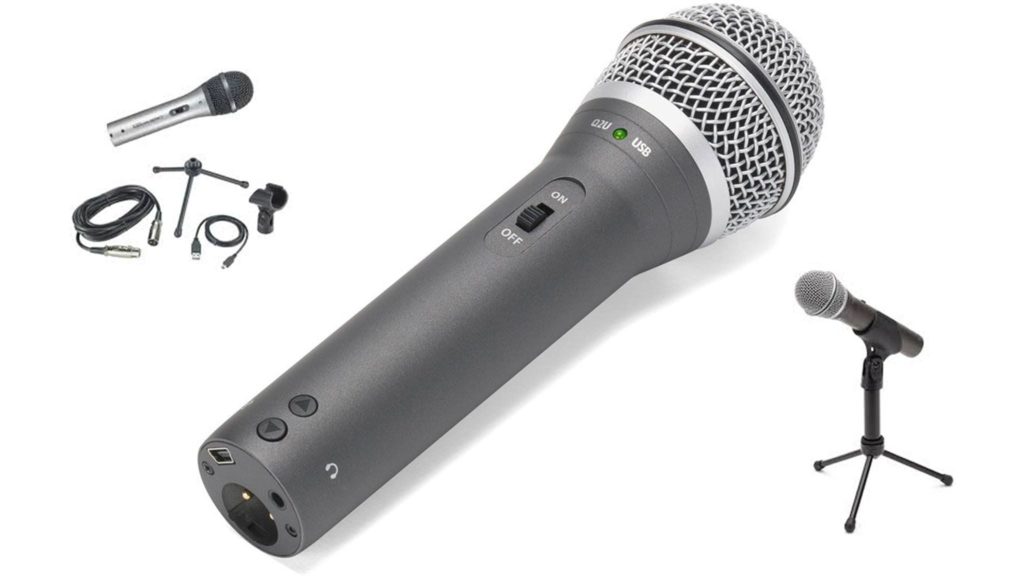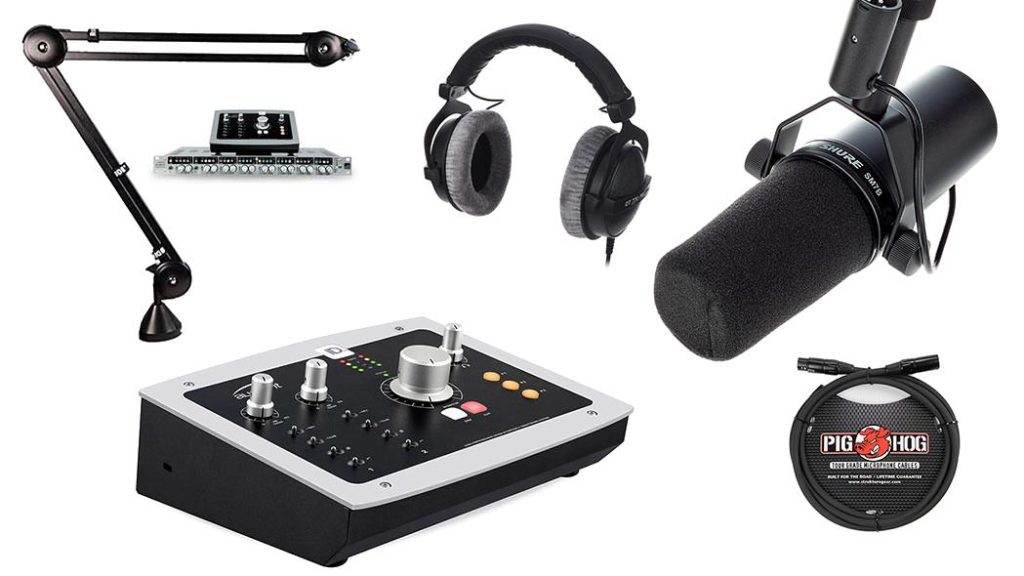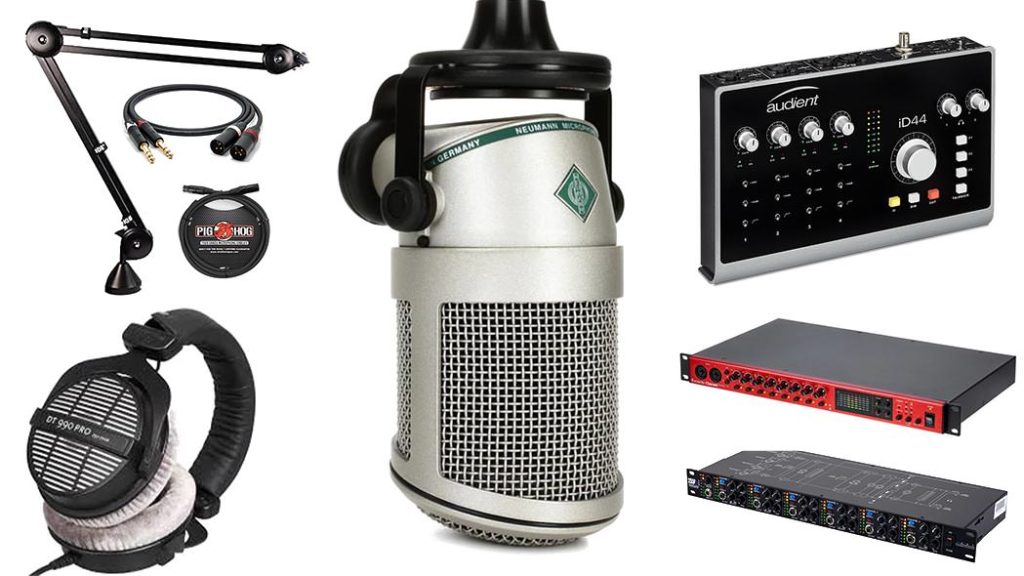Podcasting Gear Recommendations | Rules/Requirements
When preparing this little guide for podcasters and streamers I had to come up with some rules on which I would choose appropriate podcast equipment for each category. Everyone’s situation is different and I can’t possibly make a suitable recommendation for every situation. So, these are the rules/requirements for the gear I selected for you to record a podcast to a high quality standard.
1. Gear had to be found on amazon.
2. Gear that is typically used in the industry or professionals gravitate to.
3. All Dynamic mics
4. Allow for upgradability
5. No mobile rigs / portable recorders
6. Reasonable sound quality/price ratio
7. We won’t cover podcast hosting nor portable digital recorder options
Bargain Podcasting gear recommendations for under 110$
If you don’t really have much to spend on gear but still want to produce a reasonably good podcast, you can get into podcasting under $120 easily. I have searched for options that allow you to upgrade your gear down the line and to produce an even better podcasts once you have a few more bucks to spend.
Microphone / USB MICS/XLR MICS
The Samson Q2U is a hand-held dynamic microphone that features an std XLR port but also has a built-in USB interface to connect to your computer directly and act as your soundcard. Thus, no additional hardware is required to get you started with podcasting or streaming.
Samson Q2U Black Handheld Dynamic USB Microphone with Knox Boom Arm and Pop Filter $79.99
Or
Alternatively, you can opt for Audio-Technica’s variant of this concept. Both of these mics would be a great choice as your first recording-rig, feature direct monitoring, and a solid upgrade path to later on using it with a mixer, USB interface, or a dedicated channel strip.
Audio-Technica ATR2100x-USB Cardioid Dynamic Microphone (ATR Series) $99
Headphones
As for headphones, when you are starting out and don’t really have any money to spend, ANY headphones will do. You’d be amazed to know how low-budget most people go when it comes to headphones. Many people who do “run-and-gun” video or documentaries, will use deny cheapo headphones or earbuds. The key here is that you can monitor and discover issues in the production workflow while you still are in control of making corrections.
3 Packs Earbud Headphones with Remote & Microphone for $9.99
Total Cost: $90-$110
Beginner Podcasting setup under $180
Microphone
For the aspiring beginner podcaster, I have chosen the very affordable Behringer microphones. They are even less expensive than the Samson Q2U or the ATR2100! That said, they require the use of a preamp and USB interface, which was built-in into the previously mentioned microphones. This route will gain you flexibility in upgrading gear and better sound isolation as the preamp and DAC (digital audio converters) are not housed right next to the microphone capsule.
Get the Behringer xm8500for $23
Audio Interface
As an audio interface option, I have chosen the Presonus audio box 2×2. Coming in at around $100 it is one of the more affordable two-channel interfaces. With its 96KHz resolution, it is still quite capable as an entry-level interface, and as a p[odcaster you might not even outgrow the capabilities of using higher sample rates.
As mentioned before, the Presonus audio box 2×2 allows you to connect up to two mics at the same time, which is an upgrade over the integrated interface variants I have selected for our ultra-budget option.
The benefit here is that you can be more flexible in your production. The box allows for driving an external speaker pair and headphones. Even better, as we from now on will stick with external audio interfaces you will be able to choose different microphones down the line or upgrade your interface independent from each other.
PreSonus audio box 96 2×2 $99.95
Headphones
In the beginner gear category, I have chosen an affordable piece of studio headphones. The Tascam TH-02 are simple, closed-back studio headphones. Closed-back is important in podcasting as we aim to minimize bleed from the headphones into the microphone. Additionally, almost all headphone pre-amps will be able to drive these headphones.
Tascam TH-02 Closed Back Studio Headphones $19.99
Ascessories
Switching to a system with a separate interface/microphone solution, we will need a few more pieces to make the setup work. Don’t worry, it won’t be expensive.
First up, you will need an XLR cable to connect the microphone to the USB interface. In this article, we will always be choosing the same cable, but it is really up to you if you want to save a de bucks going with a super cheap cable (which I don’t recommend!) or if you want to spend a little more (also not necessary).
Let’s go with the Pig Hog PHM6 High Performance 8mm XLR Microphone Cable, 6 Feet for $14.43
You will also greatly benefit from getting yourself a cheap Microphone boom arm to mount the microphone to your desk instead of using a regular mic stand. $12.50
Cost: $170 / two-piece-setup: $240
Aspiring podcast gear recommendations for under $500
Microphone
As a solid microphone, I am recommending the Shure SM58. This microphone is considered an industry standard as a vocal microphone on stages all over the world.
Build like a tank, it is almost indestructible and as it is used as a hand-held microphone, it has an internally shock-mounted capsule. This means you don’t have to worry mounting it in a shock-mount and instead can simply use a standard microphone clip holder.
Sound quality for spoken word is very decent, too!
Buy the Shure SM58 for $95
Audio Interface
The Focusrite Scarlett 4i4 is a solid USB interface giving you 2 mic-preams, 2 additional line inserts, one headphone out and 4 additional line outs, allowing for upgrade flexibility down the line.
Get the Focusrite Scarlet 4i4 for $199
Headphones
The Audio-Technica ATH-M20x are performant headphones. Coming in at $49 they aren’t breaking the bank either and are very suitable for regular recording sessions.
Ascessories
Pig Hog PHM6 High Performance 8mm XLR Microphone Cable, 6 Feet $14.43
RODE PSA 1 Swivel Mount Studio Microphone Boom Arm $119
Cost: $477 / Two-piece-setup: $755
Pro Podcaster gear recommendations for under $1200
Microphone
In the pro category, we are going to upgrade the mic to the legendary Shure SM7B. The microphone is used all over the world in radio stations and one of the most used dynamic voice-over microphones.
That said, there is a drawback to using this microphone. It requires at least 59dB of gain from your preamp.
Not every USB interface can deliver this much gain. So, we can either opt for a line-booster like a cloud lifted, or we are going to use an interface that has a lot of clean gain.
Buy the Shure SM7B for $399
Audio Interface
I decided to put the Audient iD22. My decision is mainly based on two factors.
For once, the mic preamps in this interface can easily deliver 60dB of gain and don’t introduce much noise in the upper gain ranges. This is necessary to drive the Shure SM7B!
Secondly, the interface has a DSP chip which allows for processing the audio and running effects like compression, gate, etc right on the interface. this feature allows for processing in real-time while you don’t need to run plugins/software on your computer. It’s all done on the chip.
The Audient iD22 has two dedicated mic preamps and tons of more connectivity like effects send and return, optical in and outs to add more signals from a dedicated preamp, 48v switchable for each preamp separately, dedicated switches for low-cut filter and phase inversion,…
You can get the Audient iD22 for $499
Headphones
For the Pro category, we are going to upgrade the headphones as well. The Beyerdynamic DT770 pro are almost the perfect over-ear headphones which are also often used by professionals to mix music. That fact demonstrates how capable these headphones are.
Just beware, their impedance is 250 Ohms, which will need quite capable preamps to drive the headphones. However, you will be rewarded by highly resolving headphones that make listening to your recording a breeze.
Get the Beyerdynamic DT770 Pro for $139
Ascessories
Pig Hog PHM6 High Performance 8mm XLR Microphone Cable, 6 Feet $14.43
RODE PSA 1 Swivel Mount Studio Microphone Boom Arm $119
Cost: $1170 / Two-piece-setup: $1850
High-End Podcast gear for pro podcast studio use
Microphone
NEUMANN BCM 705 Dynamic Microphone for $699
Audio Interface
Audient ID44 for $699
Headphones
Beyerdynamic DT990 Edition 600 Ohm Headphones for $239.99
Pre-Amps
This Kit can be upgraded with external preamps. The interface is capable of recording more tracks than the two mics it has the preamps for. With the optical in, you can easily add 8 more mics and use the processing of the DSP chip on the Audient iD22, too!
Audient offers the 8 channel preamp ASP880.
Headphone Preamp
ART HeadAmp6 for $239.99
Ascessories
Pig Hog PHM6 High Performance 8mm XLR Microphone Cable, 6 Feet $14.43
RODE PSA 1 Swivel Mount Studio Microphone Boom Arm $119
Cost: A LOT =)

